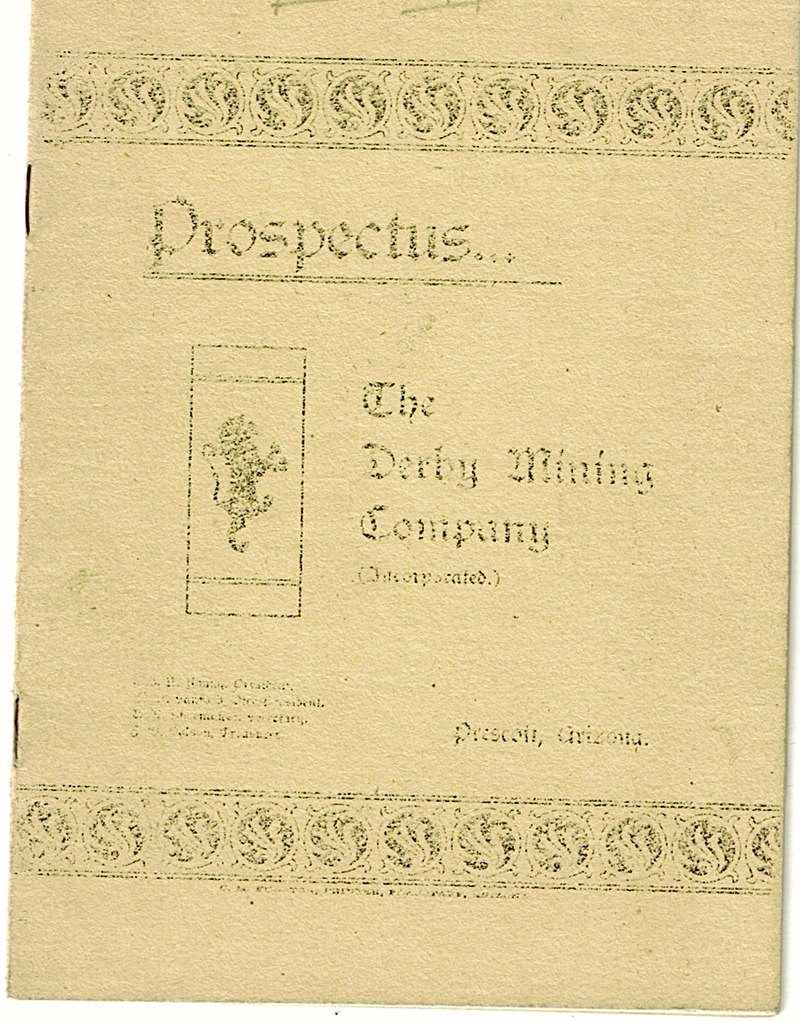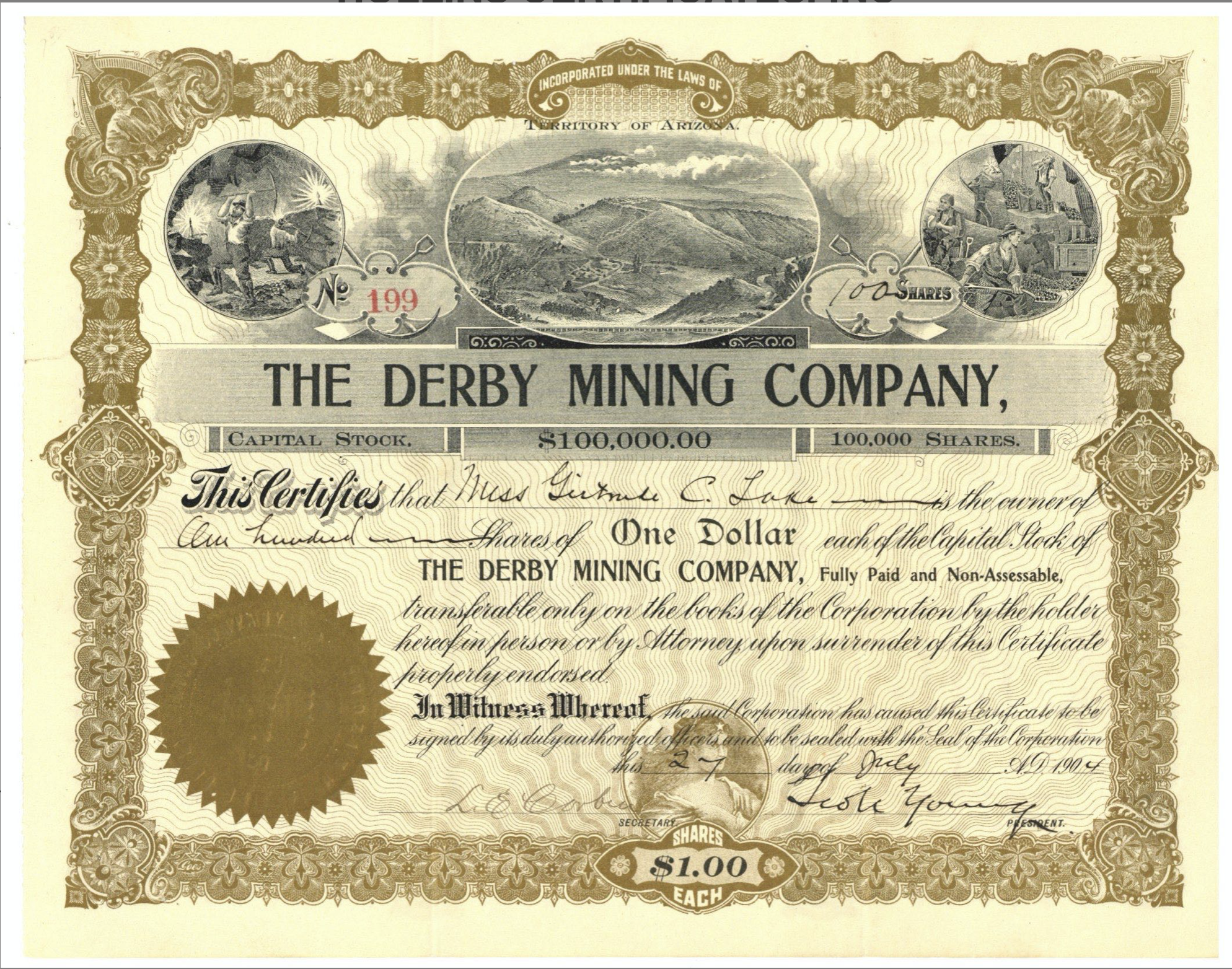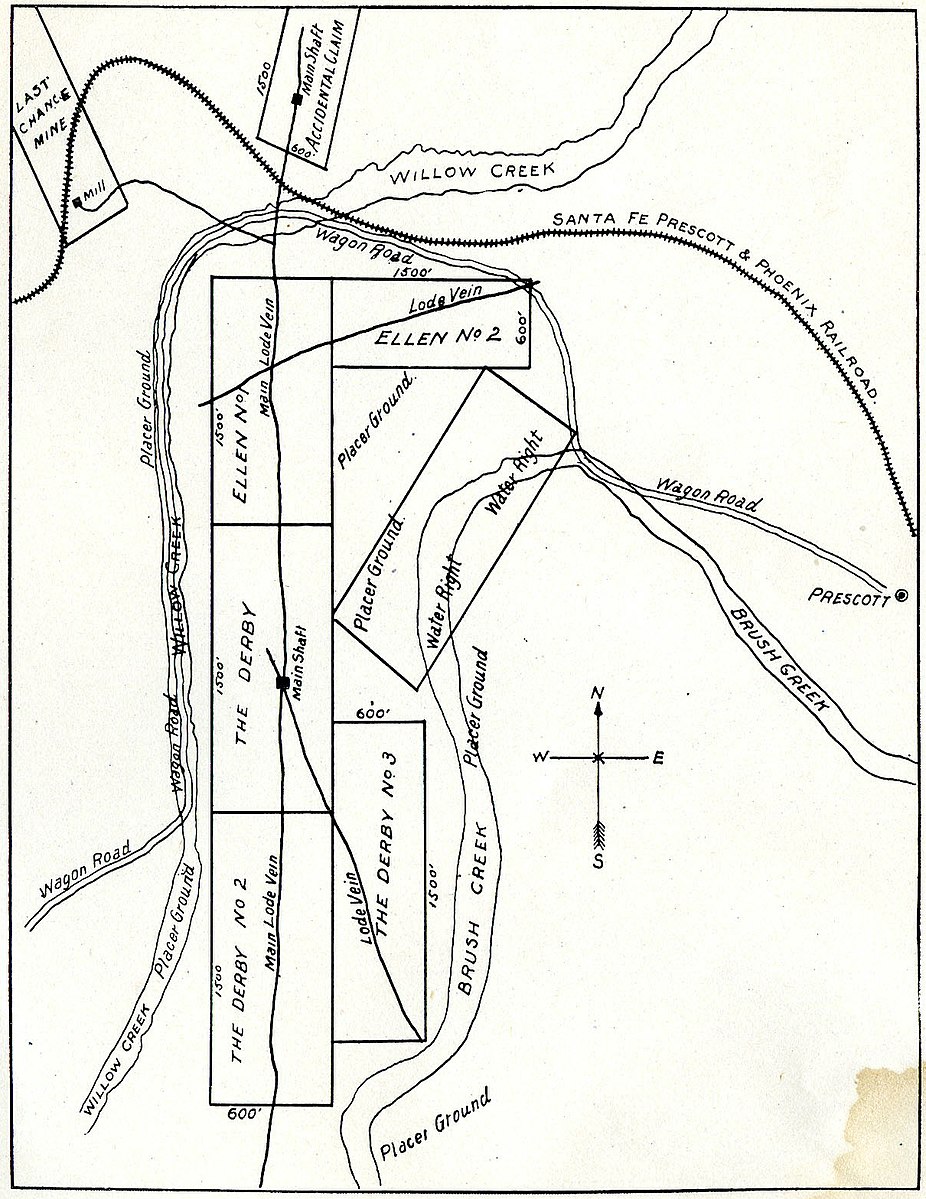Derby Mine a.k.a. ‘the Derby’
Like many others before it…
In the early 1900s, the efforts promoting the sale of stock in the Derby Mining Company, and the later Madizelle Mining Company by George U. Young, resulted in the creation of United States land entry records, by way of the General Land Office in Arizona. George U. Young was a mining promoter in the Territory, publicly promoting himself, as well as his related mining prospects since the 1890s. In 1912, Geo. U. Young sat as a director on the Phoenix Real Estate Board, which also operated from the building block at 403-404 Fleming in downtown Phoenix, present site of the Wells Fargo tower. Young acted as president and lessee of the Derby Mining Company, E.M. Sanford was the vice president, R.H. Shoemaker it’s secretary, and F.O. Polson as treasurer, publicly offering capital stock, which was primarily issued through brokers to investors on the east coast. Regularly used by Young was his office letterhead, which read: ‘Stocks, Bonds, Lands, Investments; Land and Irrigation Projects Examined; Mine Reports a Specialty.’ Young’s mining prospects were well known throughout the Thumb Butte District, where present day Highland Park is centered.

From about 1902 to May 1907, George U. Young made many efforts in the area to fulfill his ultimate vision of the Derby Mining Company’s land area, as a fixed visual representation of what became ‘Derby Mines’. After a few lawsuits, some judgements, and at least a few accidental deaths, ‘The Derby’ was reborn.
On June 17, 1907, the U.S. Surveyor General for Arizona issued official survey instructions[4] for mineral survey twenty four-twenty four to J.J. Fisher, a U.S. Deputy Mineral Surveyor. After mineral entry was made, this effort resulted in the foundation of present-day Highland Pines, the ‘Plat of the (Mining) Claim of George U. Young, which was incorporated into land patent documents, to the later Madizelle Mining Co.[5] Official records indicate the mineral plat represents twenty five lode mining claims situated in the Thumb Butte Mining District: Puritan, Puritan No. 2, Puritan No. 3, Iron Mask, Derby, Derby No. 2, Derby No. 3, Ellen No. 1, Ellen No. 2, Madizelle, Huguenot, Patsy, Humbert, Italian, Happy Strike, Sunny Side No. 1, Sunny Side, Surenough, Penos Alto No. 1, Penos Alto No. 2, Penos Alto no. 3, Highland, Knocker Doom, Protection No.2 and Protection #3.
Young is also associated with several other prospective lode mining claim location notices, for claims throughout the Highland Park area. One of his first locations is known as the ‘Accidental’ Lode Mining Claim. Additional lode mining claims situated in the Thumb Butte Mining District are the Isabella, Big Ben No. 1, Big Ben No. 2, Ellen M., Iona, Great Eastern, Last Chance (J.J. Fisher), Star, Lowry Hill, Lowry Cross, Ohio, Norman, Summit, Edgar, Alto, and Protection. Prominent locators working with Young in the early 1900s included Thomas Smith, Frank Polson, Thomas C. Hill, Silas ‘S.P.’ Hill, James R. Lowry, James Samuels, E.L. Sharpneck, George W. Sarano, Norman Hale, J.C. Forest, and Joseph Dougherty. The mining efforts here were all greatly served by the simple flag station with one switch, known by local miners as Summit Station[6] otherwise known as Sierra Prieta on the Santa Fe, Prescott and Phoenix Railway. This was promoted as the main delivery system for the hauling of heavy equipment to the mining activity in the area. One source identifies the intention in the early 1900s to have had the former railroad connect along the ridge to present day Highland Pines, up to two miles to the south, from Prieta flag station.

